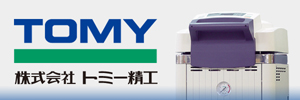O33-01 : Random transposon mutagenesis to find a beneficial gene able to enhance hydrogen production from glycerol in Escherichia coli
Posted On 20 10月 2014
Comment: Off
1Dept. of Biological Functions and Engineering, Kyushu Inst. of Tech., 2, 3, ,
Glycerol is a cheap, abundant source, and can be used for biofuel production. In this study, we used glycerol as a carbon source for hydrogen production in E. coli. Random transposon mutagenesis accompanying with adaptive evolution approach was used to find out the unknown beneficial genes for hydrogen production. We found out four mutant strains, which were able to produce from 1.3 to 1.6 fold higher hydrogen productivity (µmol H2/ mg protein) than that of their parent strain (p<0.05). These mutants were determined to individually defect in aroM, gatZ, ycgR and yfgI gene. Hydrogen yield (mol H2/ mol glycerol consumed) of strain aroM, gatZ, ycgR and yfgI is 1.7, 1.4, 2.1 and 2.4 fold higher than those of their parent strain, respectively. In E. coli, aroM is predicted to involve in the shikimate pathway; gatZ encodes tagatose-1,6-bisphosphate aldolase 2 functioning to convert dihydroxyacetone phosphate to 1,6-biphosphate; ycgR acts as a molecular brake limiting the swimming speed and ATP consumption. Thus, a mutation in aroM, gatZ and ycgR are beneficial to the hydrogen production. So far, the function of yfgI in general and to hydrogen production in particular remains unknown. These newly found genes would better elucidate the metabolic flux towards from glycerol and could be further applied in metabolic engineering to enhance hydrogen production in E. coli.
keywords:glycerol,hydrogen production,Escherichia coli,transposon,




